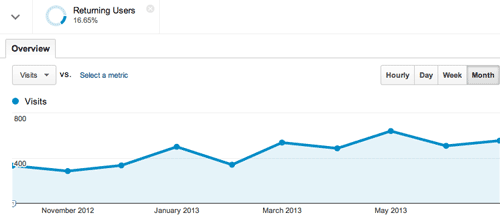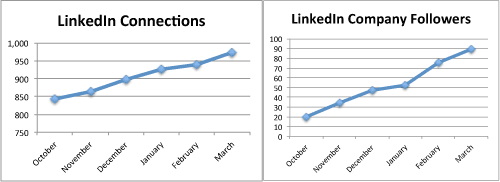Have you ever wondered if your company is building brand awareness through your inbound marketing program? Measuring leads is the easy part; measuring "brand" can be rather abstract, and I'm not here to tell you otherwise. Specifically, though, there are metrics that you can analyze to understand the brand awareness impact your inbound marketing campaign is having.
Granted, some of these measurements are somewhat simplistic. After all, I'm no Avinash Kaushik. I have, however, used these measures over time to understand the brand awareness impact of our own inbound marketing program and the programs of our clients. The numbers seem to paint a fairly accurate picture if you look at them together.
Let's look at a few of my favorite ways that an analyst or marketer can measure brand awareness.
1. "Direct" traffic over time
Direct traffic is comprised of visitors that type in your website address or use a bookmark/browser shortcut to access your website. Growth in direct traffic over time means that people are:
- Probably visiting your website on a repeat basis,
- Bookmarking your website,
- Sharing your website link via email to others, or
- Memorizing your website address

An increase over time in direct visits to your website can indicate raised brand awareness.
2. Repeat traffic
This one is probably a no-brainer, but the number of repeat visits (not the percentage of repeat visits) indicates the strength of your content and the connectedness of people to your brand.
While inbound marketing campaigns focus on traffic and customer acquisition, they should also focus on customer retention and delighting the customers, readers and evangelists that you already have.
If you use Google Analytics, you can use the "returning visitors" segment to find these numbers.

Measuring the number of returning visitors can help you understand how engaged customers are to your brand.
3. LinkedIn connections and company page followers
A large number of LinkedIn connections doesn't mean that you're necessarily a power networker or an extrovert that hands out a lot of business cards. Because you're likely posting blog posts and content offers to your LinkedIn profile regularly, people are taking notice and asking for a connection.
LinkedIn connections and company page followers can indicate that:
- Your website content or blog is reaching the right target audience,
- The target audience is actually responding to your message,
- You seem generally helpful to your audience and approachable enough to connect with,
- People trust you personally, and
- You're building rapport with your prospects
LinkedIn, in my opinion, helps to forge a more personal connection for B2B comapnies than Twitter, and anyone in sales knows that a personal, cordial connection beats a cold lead without the context of a relationship almost every time.

Using a marketing scorecard in Excel, you can track your company leaders' LinkedIn connections and company page followers over time.
4. Blog subscribers
If you're blogging on your company website, your blog is likely a popular landing spot for people searching the web for answers to a particular problem. Hopefully, you are winning them over with great content that is informative and relevant to the search that led them to your website to start with.
An increase in blog subscribers over time means that your content is relevant and strikes a chord with them. As you build credibility, your subscriber database will also grow.
There are two ways to measure this. One is by keeping a monthly count of the growth in the number of people that have your blog posts delivered by email. The other is by total RSS subscribers. We track these numbers monthly.
5. More referrals from other businesses
Your helpful website content is leaving a good impression with others, and they will eventually start recommending you and your company to their peers and connections. This can happen over social media or good, old fashioned conversation.
You'll find that a good inbound marketing campaign will generate referrals over time. As you close and delight new customers, they will tell others. Referrals indicate that their combined experience with your website and your personal interactions are consistent, and that they are of good quality. After all, people don't recommend someone they don't trust.
6. More Twitter followers or Facebook fans over time (or followers of your company's Twitter account)
While I'm not completely sold that more Twitter followers or even more Facebook fans is an indicator of brand awareness, I do believe that these metrics help tell the story when put in context (unless you're buying your followers and fans like some companies do). A steadily increasing number of followers can mean:
- You're connecting with the right audience,
- You are saying something of value to those people on a regular basis, and
- You're doing a good job of promoting your social media presence
Note: Looking at only your social media following is not a reliable way to measure brand awareness.
So there you have it. I hope these measures empower you to report the impact your inbound marketing campaign is having on brand awareness.









